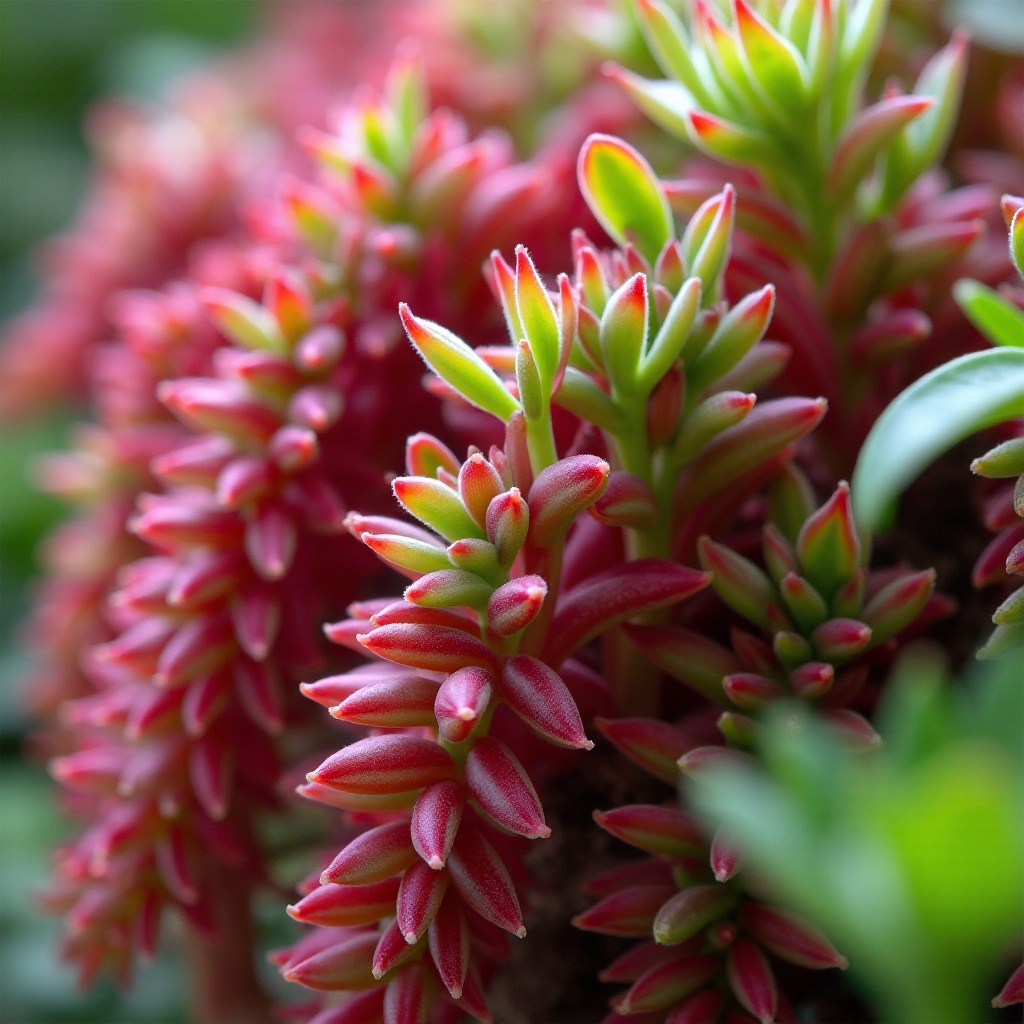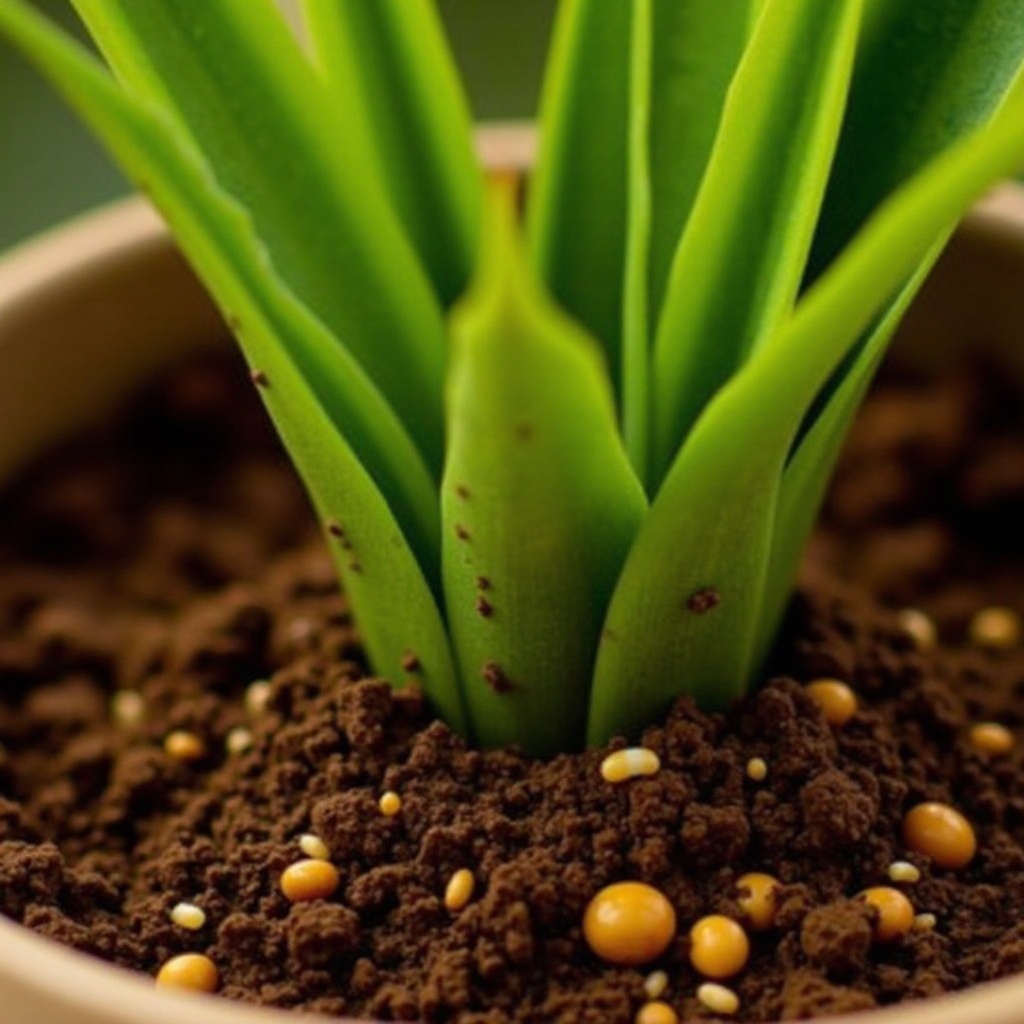Introduction to the Ruby Necklace Plant
The Ruby Necklace plant, known as Othonna capensis, is an extraordinary succulent native to the rich floral landscapes of South Africa. This plant is celebrated for its striking ruby-red, bean-like leaves that drape elegantly, resembling cascading jewels, which makes it a standout in both home interiors and garden designs. Its low-maintenance nature paired with its vivid, ornamental appearance makes it a favorite among both novice and experienced plant enthusiasts. This guide will delve into the unique features of the Ruby Necklace, providing you with a comprehensive understanding of how to cultivate and maintain its splendor, ensuring it thrives in your chosen setting.

General Care Practices
Light and Temperature Requirements
The Ruby Necklace plant is not just visually stunning but also moderately adaptable when it comes to lighting and temperature conditions. For healthy development, positioning the plant in an area that receives bright, indirect sunlight is paramount. Sun filtering through a curtain or a light-dappled spot from an east or west-facing window will enhance its vibrancy. While it naturally thrives in temperature ranges from 65°F to 80°F, maintaining consistent temperatures is key to mimic its native environment. In frost-prone or overly hot regions, ensure the plant is sheltered appropriately—either indoors or under protective shade—particularly when harsh weather conditions might harm its delicate leaves and stems.
Watering and Humidity Needs
Water management remains critical to the health of the Ruby Necklace plant. Adopting an efficient watering routine is vital to circumvent the common pitfall of root rot. Employ a method where you allow the soil to dry out thoroughly before the next watering session. This ‘soak and dry’ approach helps maintain the plant’s natural cycle, promoting robust root development. Although Ruby Necklaces are inherently resistant to low humidity, they do flourish in moderately humid environments. An occasional misting might suffice in exceedingly dry climates, ensuring the plant doesn’t become overly desiccated. It’s imperative to use pots with exceptional drainage to eliminate water retention, further protecting the roots from decay.

Soil and Fertilization
A Ruby Necklace plant owes much of its vitality to the quality of its soil. Optimally, these succulents demand a well-draining, slightly acidic substrate. A commercial cactus and succulent mix is often ideal, but you can enhance regular potting soil by mixing in perlite, sand, and pumice to improve aeration and drainage. Fertilization should be approached cautiously, typically during its growing periods in spring and summer. Administer a low-nitrogen, water-soluble fertilizer every four to six weeks, ensuring nutrients feed gradual growth and support the development of its radiant foliage without leading to unwarranted leaf proliferation or succulence loss.

Pests and Diseases
While generally robust against pest incursions, the Ruby Necklace plant can occasionally attract pests like mealybugs and spider mites. These pests can sap the plant’s health if left unchecked. Regular inspection is a proactive measure, allowing for the detection and treatment of infestations at an early stage. Implementing natural remedies, such as neem oil or insecticidal soap, can effectively deter and eliminate pests without compromising the plant’s integrity. Furthermore, avoiding over-watering and ensuring proper drainage can significantly reduce the risk of fungal diseases, maintaining the plant’s resilience and vigor. Preventative measures are always more beneficial, ensuring long-term plant health and minimizing stress on the Ruby Necklace.
Propagation and Pruning
Propagating the Ruby Necklace is a straightforward process that can expand your collection or replace older plants. Stem cuttings are the most efficient way to propagate. Cut a healthy stem section and allow it to air dry for a couple of days, forming a callus. Once prepared, plant the cutting into well-draining soil and water sparingly until roots establish. Pruning is equally straightforward—trim back any overgrown or damaged sections to encourage bushier growth and maintain its decorative appeal.
Summary
The Ruby Necklace plant, with its gleaming ruby-toned foliage and easy-care character, is a captivating and low-maintenance addition to any plant collection. Providing the right conditions of indirect sunlight, moderate watering practices, and well-draining soil ensures it flourishes beautifully. Regular inspection for pests and calibrated fertilization further aid its growth, ensuring its stunning appearance is maintained throughout various seasons. By following thoughtful care and maintenance, you can enjoy the Ruby Necklace’s lush and vibrant presence, enriching any space it inhabits with nature’s remarkable elegance. Whether cascading from a steampunk-inspired industrial shelf or gracing a modern-minimalist living room, the Ruby Necklace is sure to make an unforgettable statement.
What are the characteristics and benefits of a ruby necklace plant?
The ruby necklace plant, scientifically known as Othonna capensis, is a succulent that is cherished for its striking appearance and cascading growth. Its characteristics include slender, trailing stems adorned with small, plump leaves that display rich ruby-red or purple hues under sufficient sunlight. This plant is not only visually appealing but also easy to maintain, making it ideal for beginners and busy plant lovers. Aesthetically, it adds a vibrant, exotic touch to indoor spaces and hanging baskets. Moreover, like other succulents, it contributes to air purification, improving indoor air quality.
How do you take care of a ruby necklace plant, including watering and environmental needs?
Caring for a ruby necklace plant involves understanding its need for sun, soil, and water. Ideally, place the plant in a location where it can receive bright, indirect sunlight, as too much direct sun can scorch the leaves, while insufficient light may dull their color. Use a well-draining soil mix, typically one designed for cacti or succulents, to prevent waterlogged roots. Watering should be done moderately; allow the soil to dry out completely between waterings to mimic its native arid region conditions. During the growing season in spring and summer, you can water once every week or two, but reduce watering during the dormant winter period.
How can you propagate a ruby necklace plant and address common problems?
Propagating a ruby necklace plant is straightforward and often done through stem cuttings. Simply snip a healthy stem with a few leaves, let the cut end dry and callous for a day or two, and then place it in well-draining soil. Water it sparingly until roots develop. As for common issues, like most succulents, overwatering can lead to root rot. To address this, ensure you’re following proper watering techniques and using appropriate soil. Pests such as aphids or mealybugs can occasionally be a problem, but regular inspections and natural insecticides can effectively manage these infestations. Additionally, inadequate light can cause leggy growth; thus, ensure the plant receives ample sunlight.


